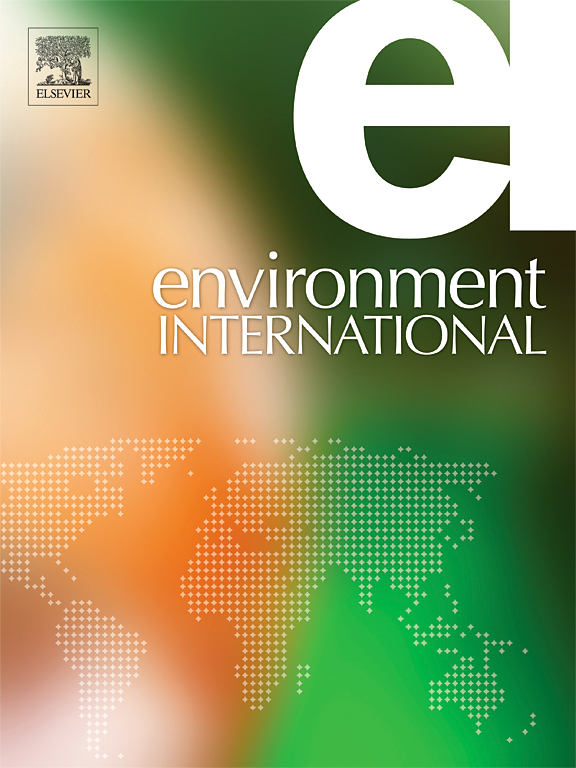为加利福尼亚开发 30 多年的高时空分辨率空气污染模型和表面
IF 10.3
1区 环境科学与生态学
Q1 ENVIRONMENTAL SCIENCES
引用次数: 0
摘要
加州的地理和气象条件多种多样,因此有必要建立模型来捕捉空气污染的细粒度分布模式。本研究介绍了高分辨率(100 米)每日土地利用回归 (LUR) 模型的开发情况,该模型的时间跨度为 1989-2021 年,涉及整个加利福尼亚州的二氧化氮 (NO2)、细颗粒物 (PM2.5) 和臭氧 (O3)。这些机器学习 LUR 算法整合了全面的数据源,包括交通、土地利用、土地覆盖、气象条件、植被动态和卫星数据。建模过程结合了利用连续监管数据、固定站点饱和度数据和谷歌街车移动监测数据进行的历史空气质量观测。多年来,二氧化氮浓度呈现持续下降趋势,这归因于监管力度和周末人类活动的减少。交通密度和天气条件对二氧化氮浓度有很大影响。PM2.5 浓度也随着时间的推移而下降,这受到气溶胶光学深度 (AOD)、交通密度、天气以及土地利用模式(如已开发的空地和植被)的影响。工业活动和居民区导致 PM2.5 浓度升高。臭氧浓度没有明显的年度趋势,周末浓度较高,而由于清道夫效应,交通密度较低。为了将每日 NO2、PM2.5 和 O3 的预测范围扩大到 1989 年,我们开发了一些预测模型,如每日道路交通量、归一化植被指数(NDVI)、臭氧监测仪器(OMI)-NO2、月度 AOD 和 OMI-O3。纵向分析表明,二氧化氮持续下降,野火影响导致 PM2.5 下降,而臭氧浓度在空间上变化不定,没有长期趋势。这项研究加深了人们对空气污染趋势的了解,有助于确定全州人口的终生暴露量,支持知情决策和环境正义宣传。本文章由计算机程序翻译,如有差异,请以英文原文为准。
Development of over 30-years of high spatiotemporal resolution air pollution models and surfaces for California
California’s diverse geography and meteorological conditions necessitate models capturing fine-grained patterns of air pollution distribution. This study presents the development of high-resolution (100 m) daily land use regression (LUR) models spanning 1989–2021 for nitrogen dioxide (NO2), fine particulate matter (PM2.5), and ozone (O3) across California. These machine learning LUR algorithms integrated comprehensive data sources, including traffic, land use, land cover, meteorological conditions, vegetation dynamics, and satellite data. The modeling process incorporated historical air quality observations utilizing continuous regulatory, fixed site saturation, and Google Streetcar mobile monitoring data. The model performance (adjusted R2) for NO2, PM2.5, and O3 was 84 %, 65 %, and 92 %, respectively.
Over the years, NO2 concentrations showed a consistent decline, attributed to regulatory efforts and reduced human activities on weekends. Traffic density and weather conditions significantly influenced NO2 levels. PM2.5 concentrations also decreased over time, influenced by aerosol optical depth (AOD), traffic density, weather, and land use patterns, such as developed open spaces and vegetation. Industrial activities and residential areas contributed to higher PM2.5 concentrations. O3 concentrations exhibited no significant annual trend, with higher levels observed on weekends and lower levels associated with traffic density due to the scavenger effect. Weather conditions and land use, such as commercial areas and water bodies, influenced O3 concentrations.
To extend the prediction of daily NO2, PM2.5, and O3 to 1989, models were developed for predictors such as daily road traffic, normalized difference vegetation index (NDVI), Ozone Monitoring Instrument (OMI)–NO2, monthly AOD, and OMI-O3. These models enabled effective estimation for any period with known daily weather conditions.
Longitudinal analysis revealed a consistent NO2 decline, regulatory-driven PM2.5 decreases countered by wildfire impacts, and spatially variable O3 concentrations with no long-term trend. This study enhances understanding of air pollution trends, aiding in identifying lifetime exposure for statewide populations and supporting informed policy decisions and environmental justice advocacy.
求助全文
通过发布文献求助,成功后即可免费获取论文全文。
去求助
来源期刊

Environment International
环境科学-环境科学
CiteScore
21.90
自引率
3.40%
发文量
734
审稿时长
2.8 months
期刊介绍:
Environmental Health publishes manuscripts focusing on critical aspects of environmental and occupational medicine, including studies in toxicology and epidemiology, to illuminate the human health implications of exposure to environmental hazards. The journal adopts an open-access model and practices open peer review.
It caters to scientists and practitioners across all environmental science domains, directly or indirectly impacting human health and well-being. With a commitment to enhancing the prevention of environmentally-related health risks, Environmental Health serves as a public health journal for the community and scientists engaged in matters of public health significance concerning the environment.
 求助内容:
求助内容: 应助结果提醒方式:
应助结果提醒方式:


